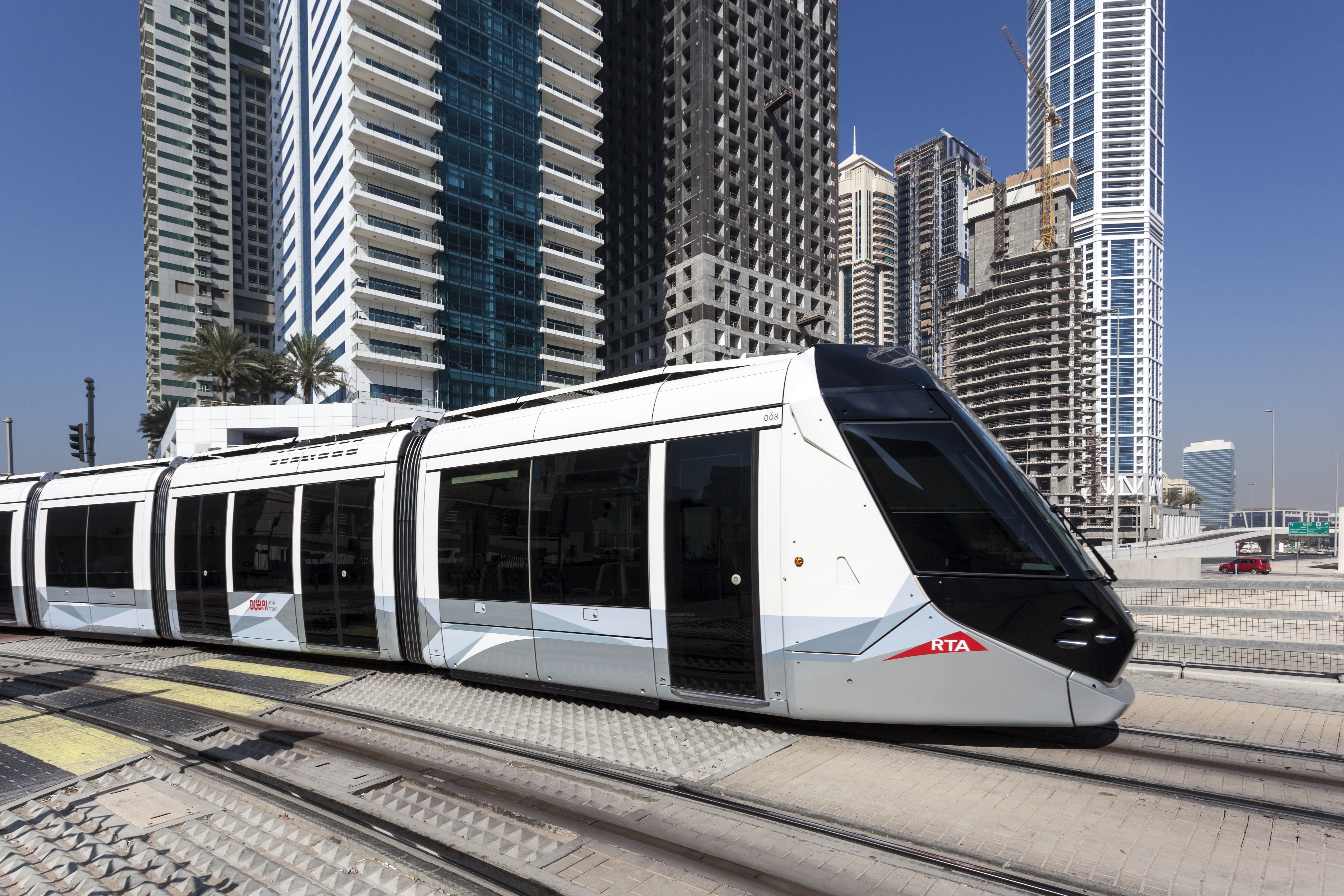Now the world is falling out of love with the internal combustion engine, is the time upon us where society can resume its fond affair with the humble tram? Absolutely, says EIX’s Peter Jarman FRSA.
It only takes a moment’s Googling to find enthusiasm for trams has never gone away.
These days this is not just sepia-toned nostalgia for bygone charms but an increasingly compelling business case for going back to tram.
Even Transport for London itself admitted that at the end of 2016 the average speed of traffic in central London was 7.8mph – roughly the same speed as a horse and cart. So you could argue whether you need more of a business case than that, given the essential economy-driving for which our cities exist.
It’s no wonder those who dwell in cities, and design and build them, have had a belly full – perhaps lungful – of the motor car.
Freedom of the car
In fact, all the historical reasons why the tram disappeared from our streets are the very same ones which now are heralding their return ie the congestion, pollution, noise and inefficiency created by the internal combustion engine.
Where, 60 years ago commuters wanted the freedom of the car, now they crave freedom from it.
For well over a century Tramways or to give them their proper name – Light Rail Transits (LRT) – were as familiar a sight in our cities as is the iconic London bus today.
The earliest form of mass public transport – the tram was simple, cheap and effective although rather slow and, being horse-drawn gave off noxious emissions of a different kind to carbon dioxide.
By the early 1800s the tram had become a hugely popular form of transportation in almost every major city around the world.
Steel wheels
Its popularity increased as it evolved with innovations such as carriages being fitted with steel wheels which ran on steel rails thus reducing the effects of poor road conditions. No pothole trouble for trams.
By the mid 1800s it was obvious animal power had its limitations and so various experiments using mechanical methods were developed and tested, notably steam power, gas and cable-hauled systems.
It was finally the adoption of a ‘trolley system’ with the collection current, that resulted in the replacement of horse-drawn carriages with electric powered street trams.

By 1900, many cities in the UK had adopted the electric tram and continued to operate while extending existing routes to reach more and more people.
Yet, despite the never-ending popularity of the LRT, many services were running at a loss. London tram operators in particular came under increasing pressure by authorities and the Tramways Act 1870 to carry out maintenance of the network.
Out with the old – in with the new
Perhaps that sounds like a familiar story of many of today’s heavier rail networks.
Heavy financial burdens were placed on the tramways to repair the whole carriageway and not just the wear from their own tracks.
The operators were also made responsible for upgrading worn-out infrastructure while, perhaps surprisingly, at the same time being accused by the London Transport Executive as the main cause of road congestion.
They were, almost suddenly, now operating an outdated, noisy and an inflexible system whilst cluttering the streets with suspended electrical cabling.
Increased pressure
This pressure was further increased after the Second World War by the 1948 nationalisation of electricity suppliers and a scarcity of materials such as steel and electrical equipment. So with little or no interest in investment for further upgrades, many companies simply gave up and ceased to operate.
The London Tram Executive continued to push for trams to be replaced with new trackless trolleybuses to help solve the problem, even though the bus services were massively more numerous because of their smaller capacity.
Ultimately, in 1952 the last London tram was retired into New Cross Depot. From that day, no general improvement in traffic flow has ever been seen. Tram services in the regions were all gone by 1960.
Today tram services are beginning to come back into fashion, even though most have experienced problems at some stage between the granting of planning permission and the ribbon-cutting, there are now seven UK cities which have built and operate tramways.
Manchester’s opened for business in 1992. The delivery of this project heralded a revival for the tram.
Sheffield in 1994
Birmingham 1999.
Croydon in 2000.
Nottingham 2004
Blackpool (in its current format and after much regeneration) in 2012.
Edinburgh (after numerous delays and cost overruns) in 2015.
In 2000 the Government of the day pledged to build 25 new tram networks by 2010 yet squabbles over, among other things, sources of funding have led to, at best, inertia.
Leeds and Bristol are among those to have outlined proposals, but despite government approval the Bristol project was cancelled in 2004. The initial cost of £194 million was to be provided by a PPP, which would include 20 per cent funding from the private sector. The remaining funds were to come from the government and the local authorities of Bristol and South Gloucestershire.
Supertram
The plans for the £500m three-line Leeds ‘Supertram’ have been on the drawing board since the early 1990s yet have twice been turned down for funding – the last time in 2005.
Like all significant infrastructure projects there is an elongated lead-time. Edinburgh’s took six years from first shovelful to first passenger.
Take Croydon as another example. A proposed tram system in Croydon was approved in principle in 1990. The Croydon Tramlink Act 1994 included parts of the 1870 Act which means road maintenance at no additional cost as routes are managed by same authority. The procurement process for the route commenced 1994-1996 followed by four years of construction 1996-2000.
Transport for London bought Croydon’s tram for £98m and in 2008 changed the name to Tramlink and changing the livery. Today, it is operated by First Group.
In cities world over light railways and trams are making a comeback: From Melbourne to Marrakech and Singapore to Seville, trams are appearing (or being renovated) and operational.
Advantages
The opportunities and advantages of a tramway are manyfold. Here are just a few.
- Electrification is a solution to the replacement of diesel-powered transport to increase capacity, reduce cost and pollution.
- New technologies including APS Ground-level power supply (the acronym is French) is now in use, primarily for aesthetic reasons, as an alternative to overhead lines but also saving operational costs (off-on-off) third rail solution.
- Sustainable materials are readily available now to extend lifecycle
- Preventative maintenance applications also reduce costs
- Potential for innovative infrastructure to start paying for itself predictably and steadily
- There is a growing market for Trams/Light Rail MPT world wide
- Alternative power solutions such digital trackless trams in development
Assuming there is an appetite for a tramway (and a reliable source of funding) there are other significant challenges which have to be met in terms of construction.
Light Rail Transit has a permanent share in the road space both during construction and in operation. This naturally has a disruptive effect on existing pedestrian and traffic flows.
Challenges
Of course it’s not easy. Just some of the many potential issues faced by constructors are:
- Planning of traffic management including permanent emergency service routes during the construction phase
- Swept path analysis for temporary traffic management, permanent road layout
- Effective coordination with stakeholders along the route
- Planning and executing utility diversions and upgrades particularly with underground utility companies
- Protection of grade-listed structures
- Conservation orders for the removal of selected trees along the route
- Removal and relocation of street furniture and associated utilities
- Adaptations to pavements, corners and kerb lines for temporary traffic management and delivery of construction materials
- Alternative layouts for pedestrian crossings during construction phase
- Traffic signal planning, installation and phasing along the construction route
- Planning and providing additional alternative routes for road traffic flows
- Planning for parking of vehicles for residential use along the construction route
- Planning and setting up of satellite construction sites along the route
- Planning out potential delays to the movement of road traffic, during and after construction particularly at the road junctions
- Raising public awareness and education of temporary/final layouts
- Reeducating road users due to lack of lane discipline
- Timely supply of Rolling Stock and long lead equipment on the critical path
The New Era
Never mind the clunky old references to slow and noisy old tram the very word itself evokes. Tomorrow’s tramways are being made from space-age materials and look like these:
Dubai Light Rail Transit (LRT)

A 9-mile 36-minute tram journey from Dubai Marina to Palm Jumeirah and Al Sufouh. The US$1bn Dubai Tram is the first tramway project outside Europe to be powered by a ground-based electric supply system.
China’s Trackless Train – Test run of Autonomous Rail Rapid Transit

Is it a tram, train or bus? It has divided opinion but ultimately does the required job.
Billed as the first ‘Smart Train’. Runs along virtual rail lines with a 43mph maximum and capacity of 300 passengers, this Chinese innovation looks very much like the future of tram travel.
Old problem, new solution
Regardless of the power of the business case, this new era of the tram and the light railways, just like those of old, remain faced with the biggest problem of all. Funding.
And this is where EIX comes in. Large insurance and pension funds all compete for a small pool of infrastructure assets and are turning back the pages of history to encourage the development of projects that provide essential public services. If you are interesting in establishing or renovating a tram system, we can help.

